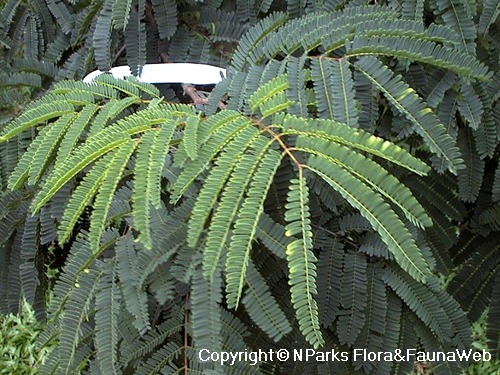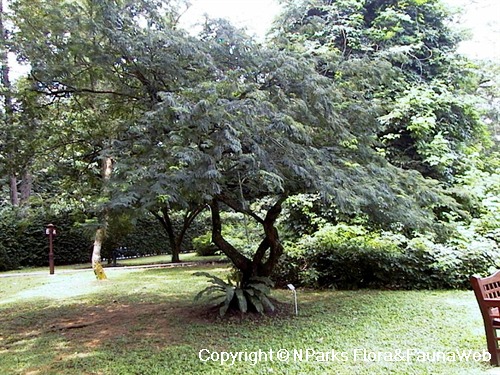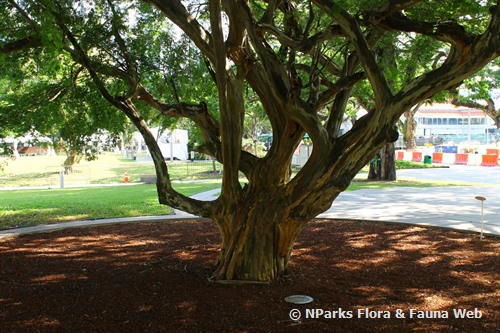
Back
Libidibia coriaria (Jacq.) Schltdl.
| Family Name: | Fabaceae (Leguminosae) |
| Synonyms: | Caesalpinia coriaria (Jacq.) Willd. |
| Common Name: | Divi-divi |
Name
Classifications and Characteristics
| Plant Division | Angiosperms (Flowering Seed Plants) |
|---|---|
| Plant Growth Form | Tree |
| Lifespan (in Singapore) | Perennial |
| Mode of Nutrition | Autotrophic |
| Maximum Height | 10 m |
Biogeography
| Native Distribution | Tropical America |
|---|---|
| Native Habitat | Terrestrial |
| Preferred Climate Zone | Tropical |
| Local Conservation Status | Non-native |
Description and Ethnobotany
| Growth Form | It is a tree, up to 10 m tall. |
|---|---|
| Foliage | Leaves are compound with 4 – 8 leaflets and often with a terminal leaflet. Each leaflets have 15-28 pairs of pinna, which is oblong (4 – 9 mm long and 1 – 3.5 mm wide) and sessile. |
| Flowers | Inflorescences (2 – 6 cm long) occurs at the terminal and axillary end. Flower is small (0.3 – 0.6 cm long), fragrant and cream yellow coloured. |
| Fruit | Seed pod is oblong to ovate (3 – 6 cm long and 1.5 - 3 cm wide), often becoming twisted. Each pod contains 1-10-seeds and becomes fibrous-pulpy when mature. |
| Ethnobotanical Uses | Others: The pods are rich in tannin and used in the tanning industry in Central America. |
Landscaping Features
| Desirable Plant Features | Fragrant |
|---|
Plant Care and Propagation
| Light Preference | Full Sun |
|---|---|
| Water Preference | Moderate Water |
| Plant Growth Rate | Moderate |
Foliar
| Mature Foliage Colour(s) | Green |
|---|---|
| Leaf Area Index (LAI) for Green Plot Ratio | 3.0 (Tree - Intermediate Canopy) |
Floral (Angiosperm)
| Flower Colour(s) | Cream / Off-White |
|---|
Image Repository
Others
| Master ID | 1473 |
|---|---|
| Species ID | 2766 |
| Flora Disclaimer | The information in this website has been compiled from reliable sources, such as reference works on medicinal plants. It is not a substitute for medical advice or treatment and NParks does not purport to provide any medical advice. Readers should always consult his/her physician before using or consuming a plant for medicinal purposes. |


